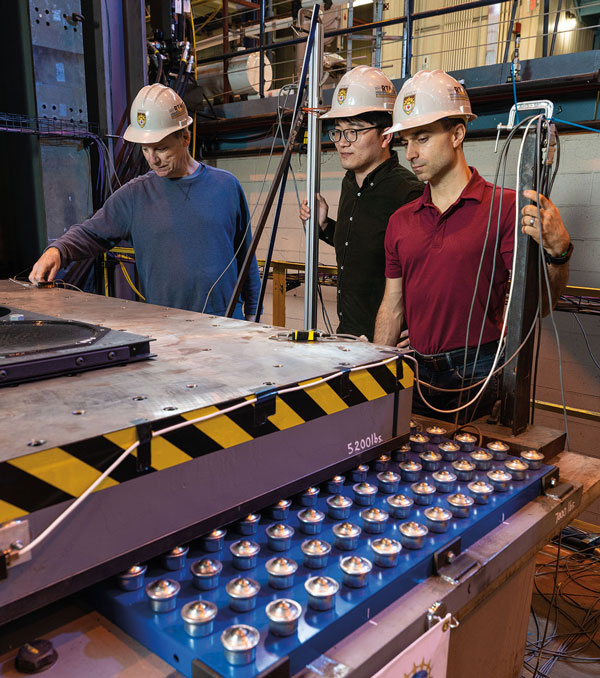 Lehigh’s NSF-funded Natural Hazards Engineering Research Infrastructure Experimental Facility (NHERI Lehigh EF) has unveiled additional lab space and new equipment for conducting real-time cyber-physical experiments, which are ideal for testing large-scale structural systems that are impractical—or impossible—to test in a normal laboratory.
Lehigh’s NSF-funded Natural Hazards Engineering Research Infrastructure Experimental Facility (NHERI Lehigh EF) has unveiled additional lab space and new equipment for conducting real-time cyber-physical experiments, which are ideal for testing large-scale structural systems that are impractical—or impossible—to test in a normal laboratory.
The enlarged facility can accommodate more users and a broader range of hybrid simulation applications for natural hazards researchers to explore structural mitigation solutions for windstorms and earthquakes.
"Our facility is unique in the nation—one of the few laboratories dedicated to supporting large-scale, real-time, 3D cyber-physical testing," says professor James Ricles, principal investigator and director of the NHERI Lehigh EF. "With these upgrades, Lehigh can be an even stronger partner to researchers around the country and the world seeking to design more resilient, sustainable infrastructure."
The facility’s new Real-time Cyber-Physical Structural Systems testing laboratory consists of 4,000 additional square feet of lab space and includes five new test beds (each with a dedicated dynamic actuator), a multidirectional shake table, a dedicated high-speed data acquisition system, and a multichannel digital servo-hydraulic control system.
“Our new multidirectional shake table can realistically emulate combined translational and twisting motions that structures sometimes demonstrate under extreme 3D wind loading due to nonuniform wind pressures acting over the façade of the building, along with possible vortex shedding,” says Ricles, Lehigh’s Bruce G. Johnston Professor of Structural Engineering. “Further, our new shake table can be deployed in quasi-static testing as well as real-time hybrid simulation experiments.”
—Photo by Ryan Hulvat/Meris
